This week’s submissions offer a look into the diversity of our pollinators, from bees to moths to the (lesser-known) flower beetles. Everyone is busy collecting food for their young or bulking up for themselves. This upcoming holiday weekend weather promises to be prime bug-hunting conditions, so get out there and see what you can find!
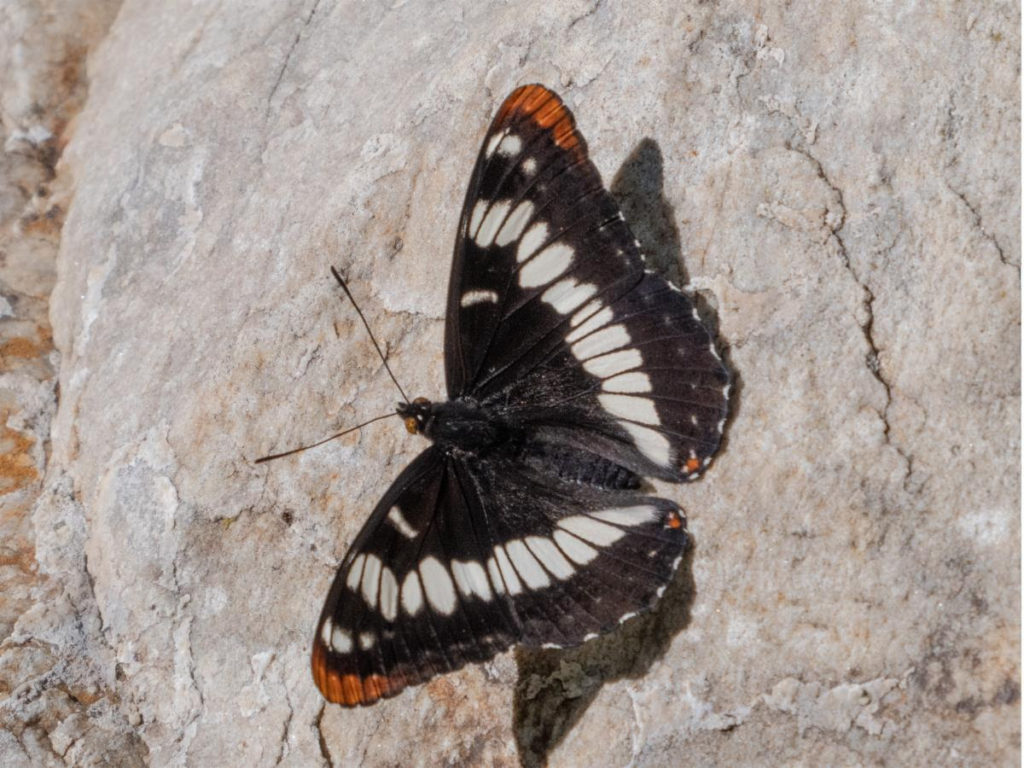
Lorquin’s Admiral
Limenitis lorquini
Named for French naturalist Pierre Joseph Michel Lorquin, this striking butterfly ranges from British Columbia south to Baja California, residing in forest edges, fencerows, and orchards. The larvae feed on willow, poplar, and chokecherry, while adults take nectar from California buckeye, yerba santa, and privet (although they will occasionally extract nutrients from dung and bird droppings). There may be two broods per year in southern locales, but as far north as we are, we will only see one from June to September.
Pat Little, June 21st, 2023. Greenough Park, Missoula, MT.
Unnamed Flower Beetle
Etorofus propinquus
Flower longhorn beetles (subfamily Lepturinae) are recognized by their broad “shoulders,” long, tapering bodies, and affinity for – you guessed it – flowers. There are about 150 genera worldwide, with most of the diversity occurring in the northern hemisphere. Members of the genus Etorofus are widespread throughout the United States, though they are absent from much of the Midwest and South. Larvae spend years developing underground, feeding on decaying organic material.
Kelly Dix, June 26th, 2023. Sawtooth Creek, Hamilton, MT.
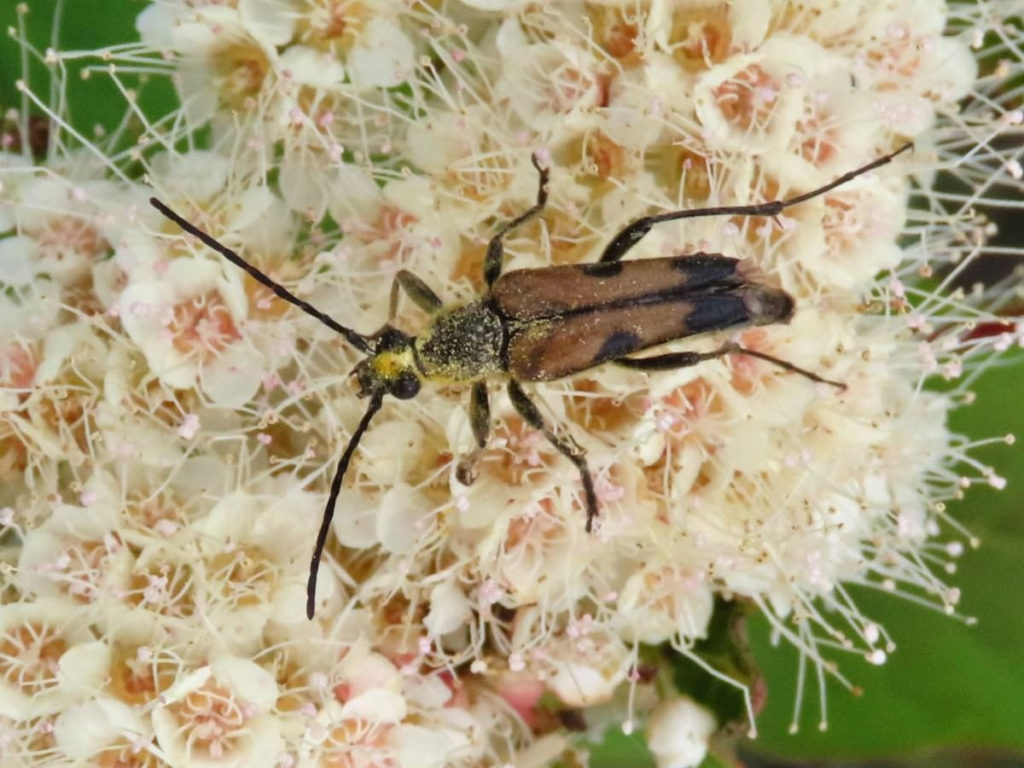
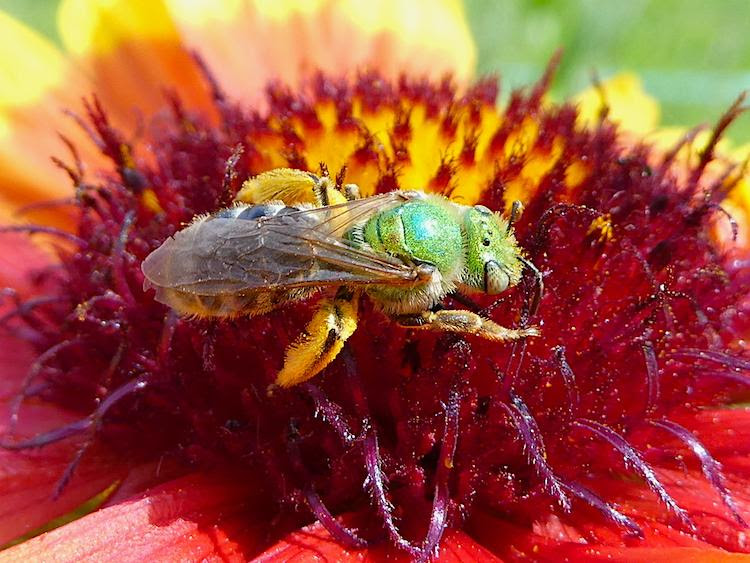
Striped Sweat Bee
Agapostemon sp.
These native bees are typically a metallic green or blue (especially the head and thorax). There are 44 species in the genus, ranging from Canada to Argentina. The name “sweat bee” refers to their resemblance to their relatives, bees in the Halictus and Lasioglossum genera. However, Agapostemon are not attracted to human sweat like other so-named sweat bees. Females collect and carry pollen on scopal hairs located on their hind legs.
Glenn Marangelo, June 21st, 2023. Missoula, MT.
Potter Wasp
Ancistrocerus sp.
Potter and mason wasps are solitary wasps belonging to the subfamily Eumeninae. Their name derives from their unique nest-making techniques; Potter wasps construct small, pot-shaped nests from mud, clay, chewed plant material, and regurgitated water. Some North American indigenous tribes may have taken inspiration from the nest shape for their own pottery. Species in the genus Ancistrocerus are found worldwide but tend to be more frequent in the northern hemisphere.
Glenn Marangelo, June 20th, 2023. Missoula, MT.

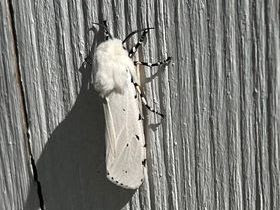
Salt Marsh Moth
Estigmene acrea
At first glance, this lightly-dotted moth may be confused for a Virginian tiger moth. However, the lack of fuzzy white legs gives this individual away as a salt marsh moth. The name of this elegant moth reflects its frequency in coastal salt marshes (tidal marshes) along the Pacific, Atlantic, and Gulf Coasts. But really, they can be found in any open habitat throughout North America, except for Alaska and the Yukon. Part of the tiger moth family is related to the more familiar woolly bear; the caterpillars feed on various plants, often seen rapidly wandering around on the ground, searching for new food sources.
Sarah Dennis, June 22nd, 2023. Missoula, MT.
Modest sphinx
Pachysphinx modesta
This large sphinx moth is only found briefly in the northern United States and Canada, from mid-June to mid-July. From July to November, their offspring are bulking up, preparing to overwinter underground in their pupal stage. The name refers to the dark lower portion of the adult wings; when at rest, it seems the moth is dressed “modestly” as though wrapped in a dark scarf or shawl. They can be found anywhere their larval host plants grow: poplar, aspen, cottonwood, and willow. With their short lifespan, the adults do not feed at all, instead spending their time looking for a mate.
Lea Bossler, June 23rd, 2023. Missoula, MT.
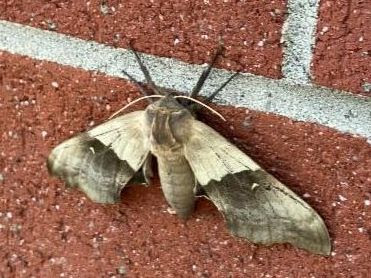
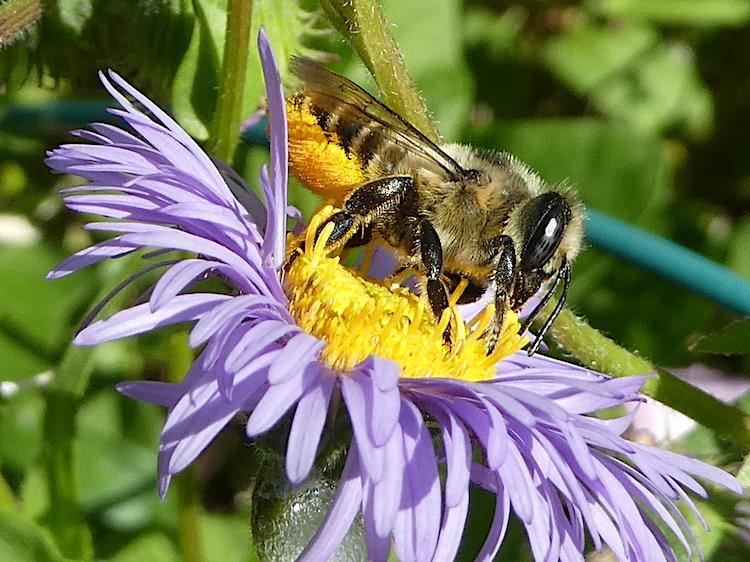
Leafcutter Bee
Megachile sp.
These small bees readily inhabit “bee hotels” and other natural tunnels in wood or the ground. They construct several cells in each tunnel from the leaf pieces they collect. Each cell will contain a single egg and a store of pollen to feed the emerging larva. Since the female is on her own (they do not work together as a colony), they are usually swamped, making many trips back and forth with pieces of leaves and pollen. Unlike other bee species that collect pollen in pollen baskets on their legs, leafcutters collect pollen in dense hairs on the underside of their abdomen (called scopa), turning their bellies yellow as they gather.
Glenn Marangelo, June 22nd, 2023. Missoula, MT.
Yellow Velvet Beetle
Lepturobosca chrysocoma
The flower beetles are out in full force! The second member of the subfamily These golden, fuzzy-looking beetles can be found from Canada to Northern Mexico, mainly in the western part of North America. They range in size between 1 to 2 centimeters. Adults feed on flower pollen, while the larvae feed on dead and decaying wood of hardwoods and conifers.
Kelly Dix, June 26th, 2023. Sawtooth Creek, Hamilton, MT.
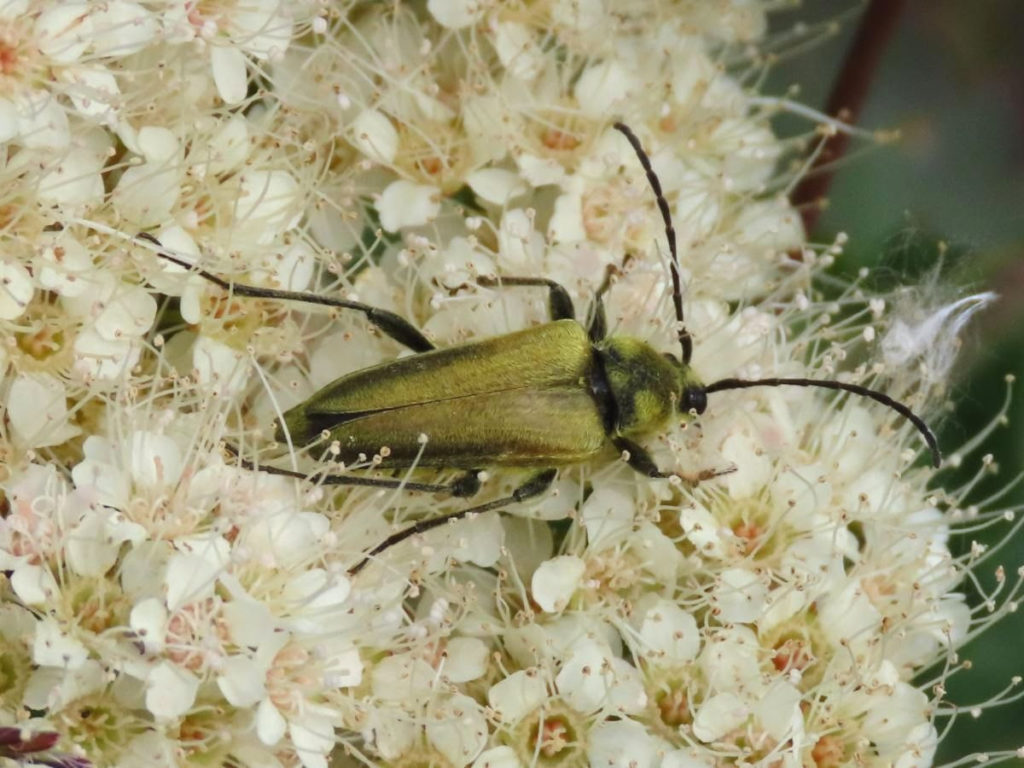
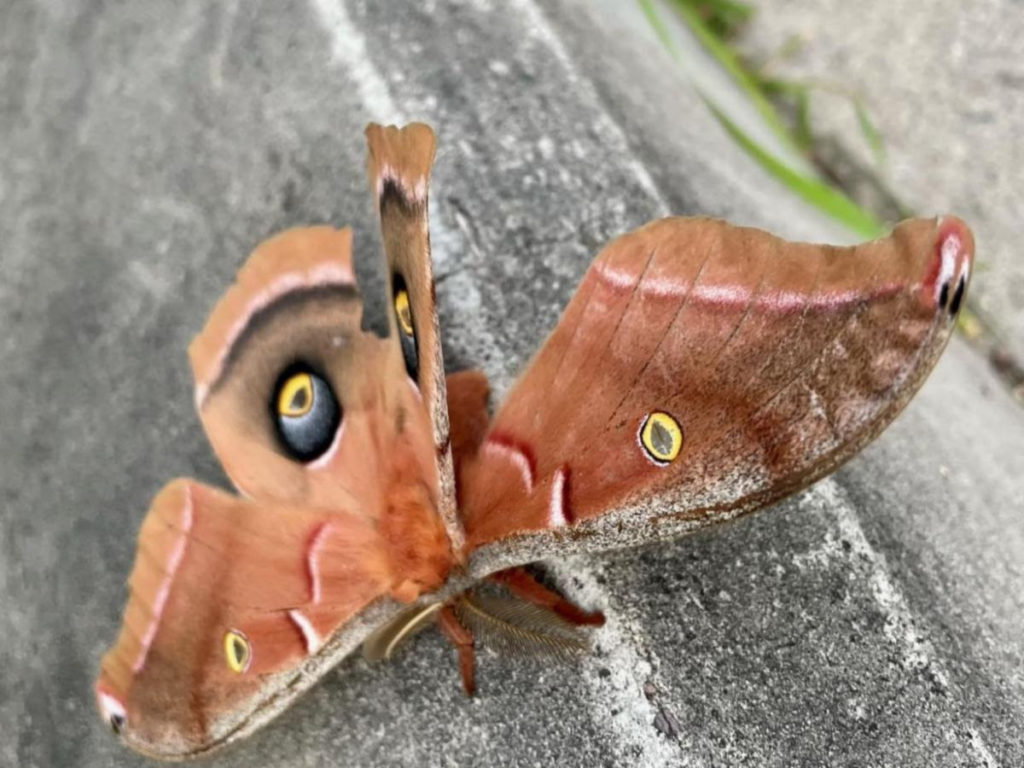
Polyphemus Moth
Antheraea polyphemus
With a wingspan of up to six inches, the adult Polyphemus Moth is the largest species of giant silk moth in Montana, so it should come as no surprise that their caterpillars are pretty massive, too (3 to 4 inches in length when fully grown). They are found across the lower 48 states (except Arizona and Nevada) and southern Canada. The hungry caterpillars can eat 86,000 times their weight over the two months it takes to grow until pupation, happily munching on various trees and shrubs, including oak, willow, maple, and birch.
Corinne Williams, June 27th, 2023. University of Montana, Missoula, MT.
Boisduval’s Blue
Icaricia icarioides
The Boisduval’s is a large blue, approaching one and a half inches, and is on the wing in late spring into summer in various habitats (mountain meadows, forest openings, prairies). The males are lilac-blue with dark borders on the upper side, while the females may be brown or blue with wide dark edges. Females lay eggs on new growth of lupine species (Lupinus). Caterpillars feed first on leaves, then flowers and seedpods. This species sticks to the west, from British Columbia east to the western edge of the Great Plains, south to New Mexico, Arizona, southern California, and Baja California.
Kelly Dix, June 26th, 2023. Sawtooth Creek, Hamilton, MT.
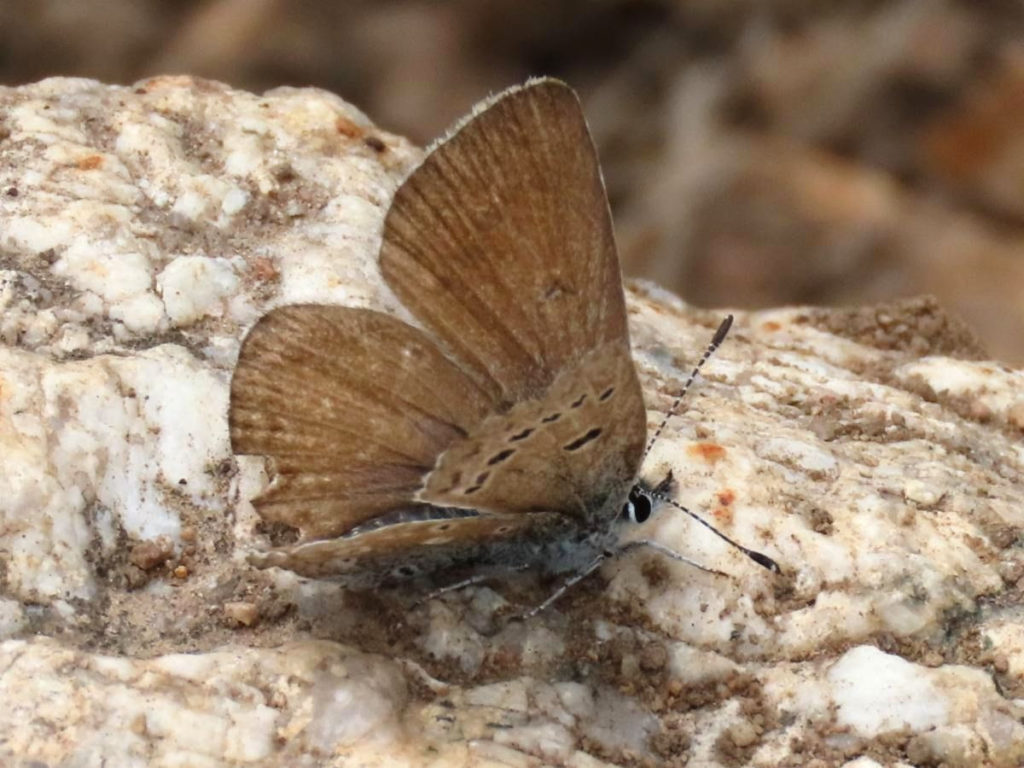
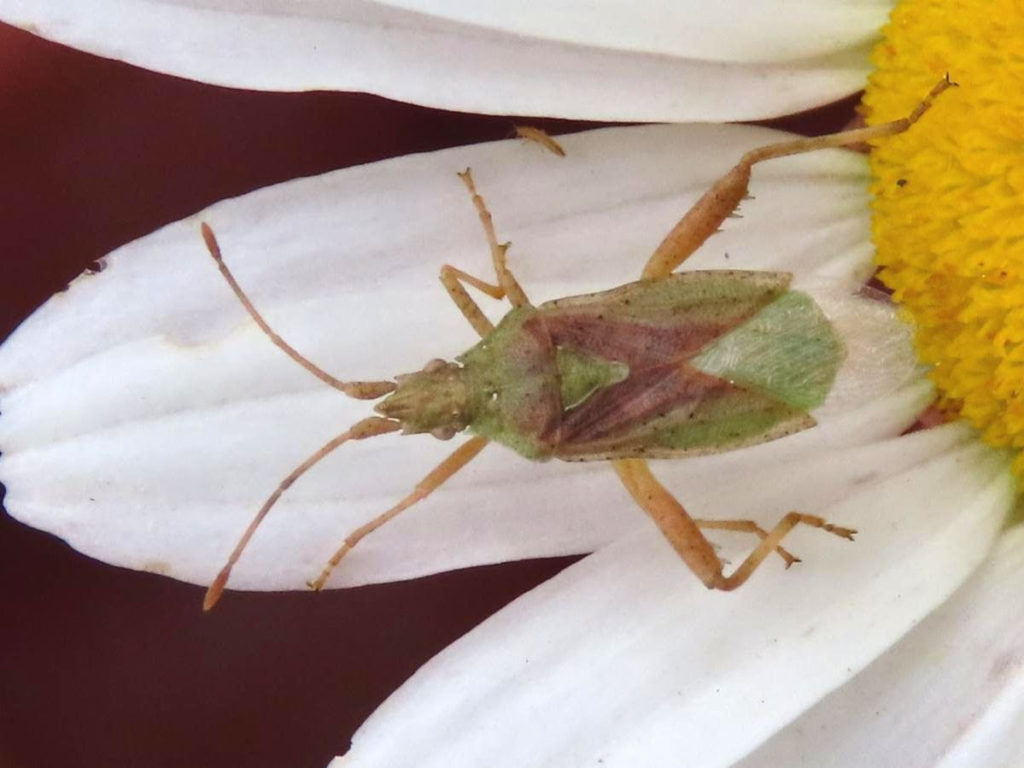
Unnamed Plant Bug
Harmostes reflexulus
While many plant bugs are known for their smelly defense chemicals, Harmostes reflexulus belongs to the family Rhopalidae – the scentless plant bugs. They are widespread throughout the United States and southern Canada, feeding on the seeds of herbaceous plants. Like their close relatives, the (in)famous box elder bug, these true bugs overwinter in their adult stage, though you’re less likely to find them invading your home in the colder months.
Kelly Dix, June 26th, 2023. Sawtooth Creek, Hamilton, MT.
Spotted Tussock Moth
Lophocampa maculata
The caterpillars of this moth species look like the well-known “woolly bear” caterpillar but with the addition of long, white hairs coming from the body. They range across southern Canada, the western US, and the Appalachians to South Carolina and Kentucky. The beautiful adults fly from May to July, with the larvae found from July to September. The caterpillars prefer to feed on poplar and willow leaves but will also feed on alder, basswood, birch, maple, and oak. Tussock moths get the name “tussock” from the tufts of hair on the caterpillar.
Corinne Williams, June 27th, 2023. University of Montana, Missoula, MT.
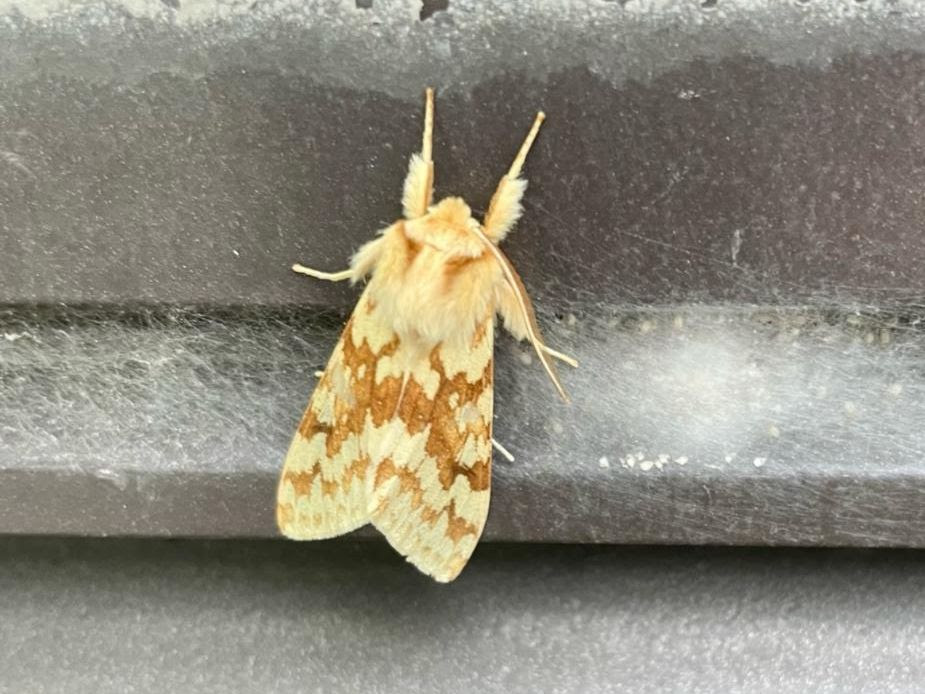
Featured image: European honey bees (Apis mellifera) feeding from showy milkweed. Photo by Brenna Shea.